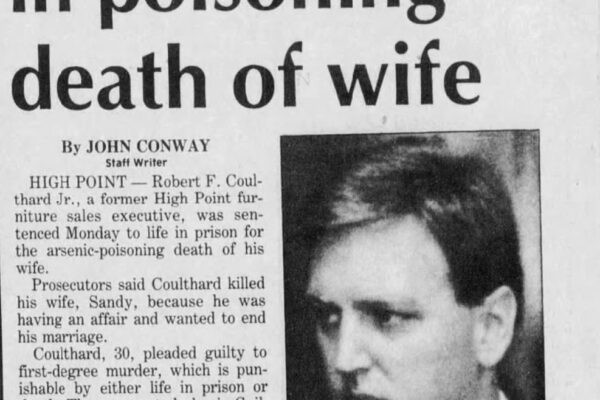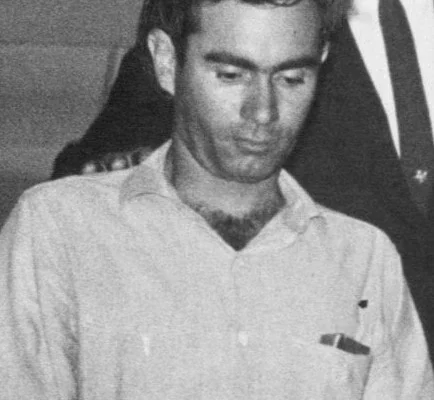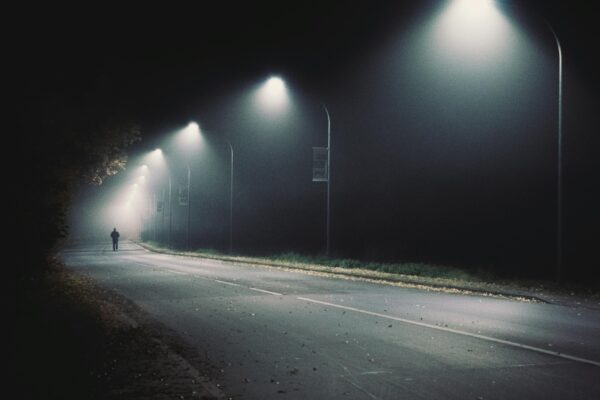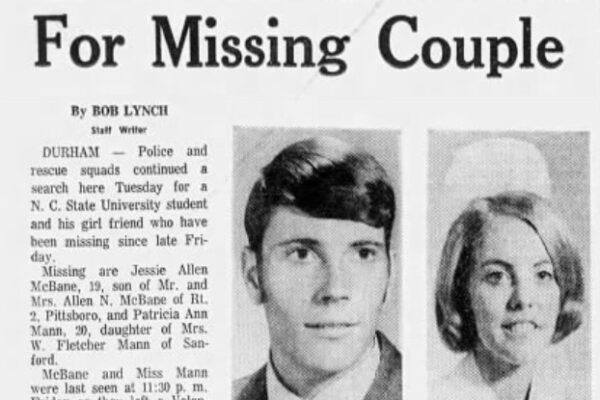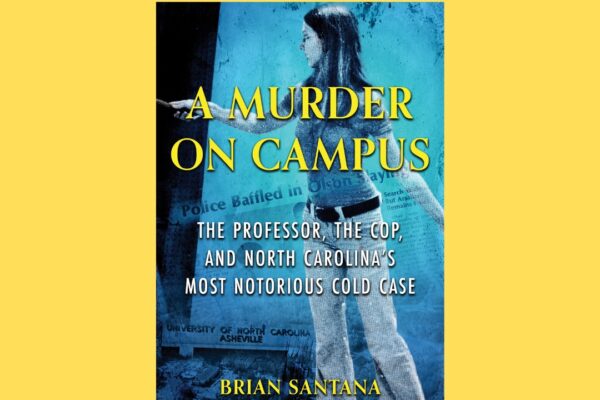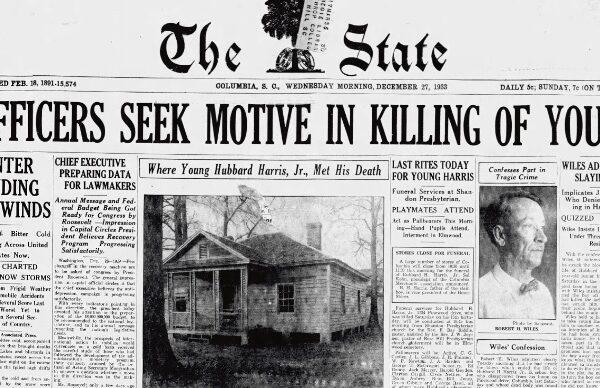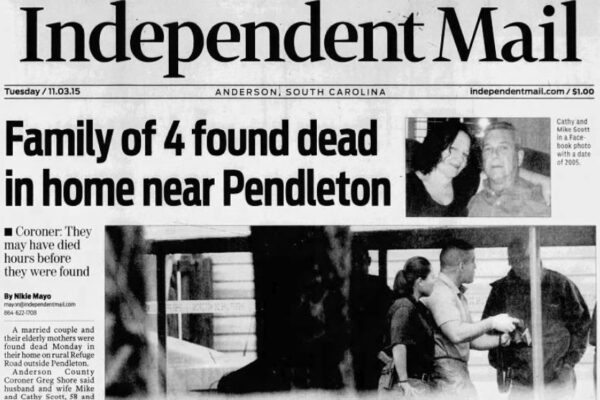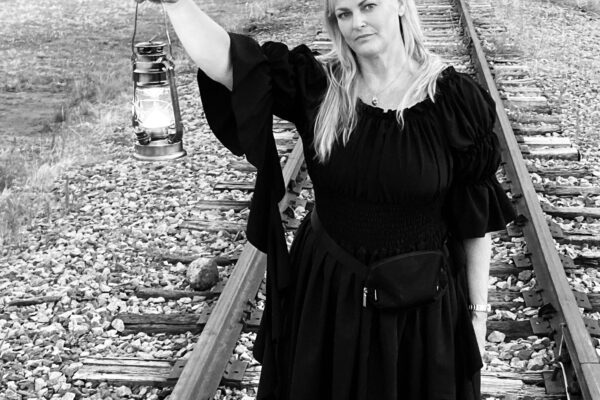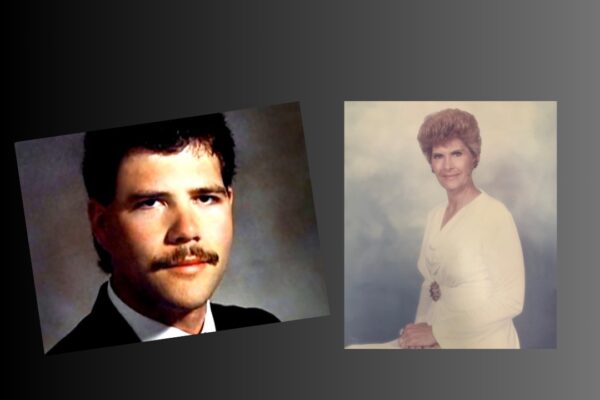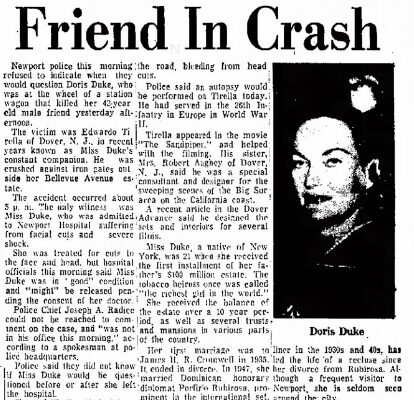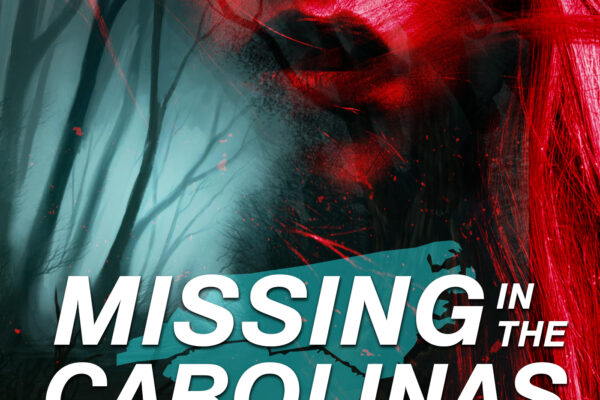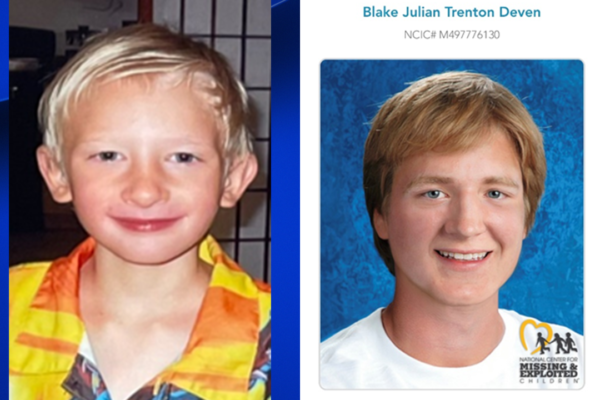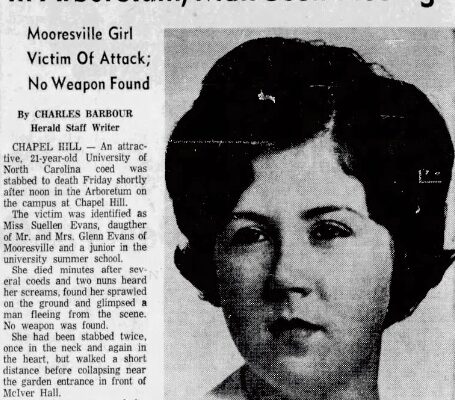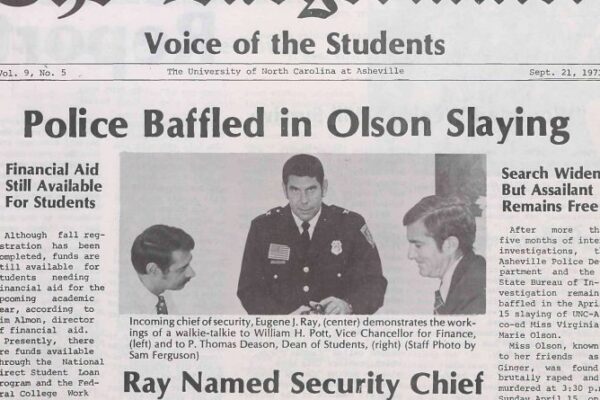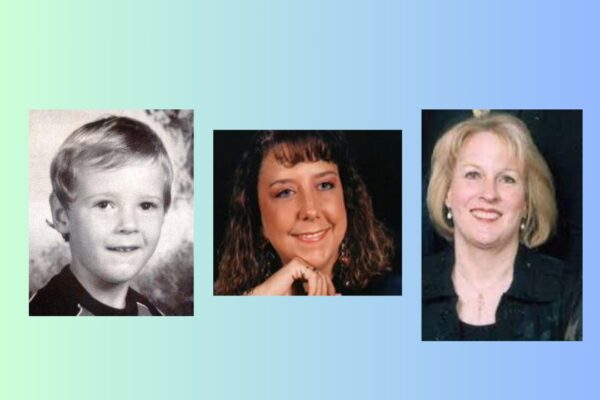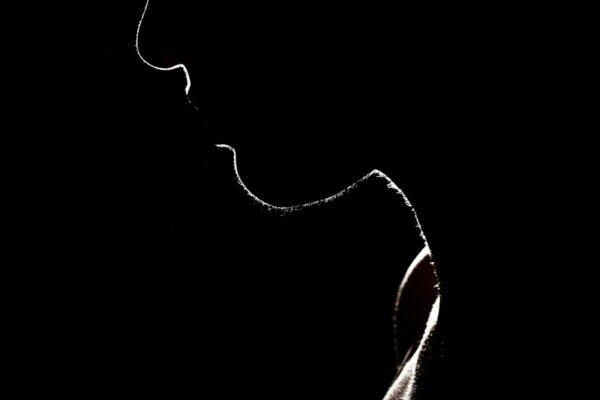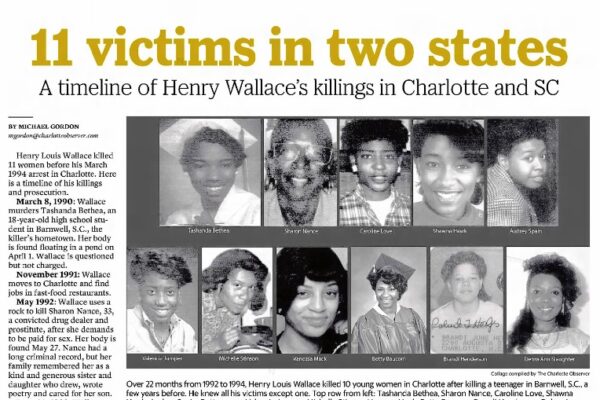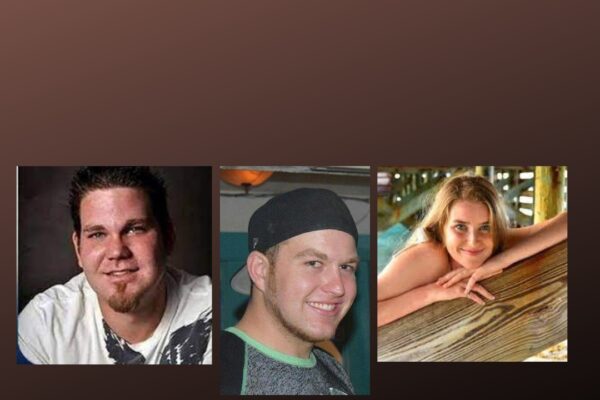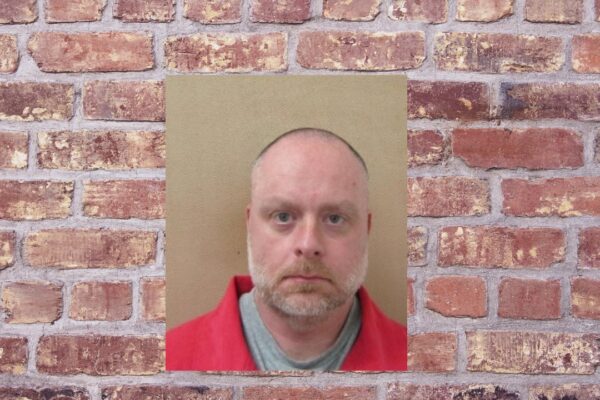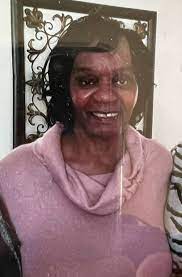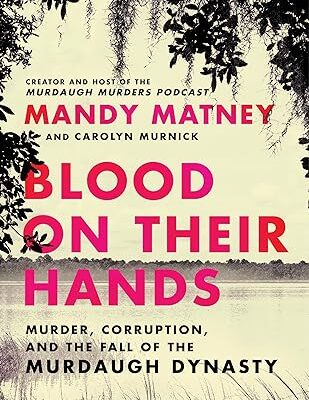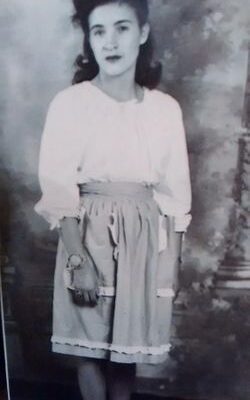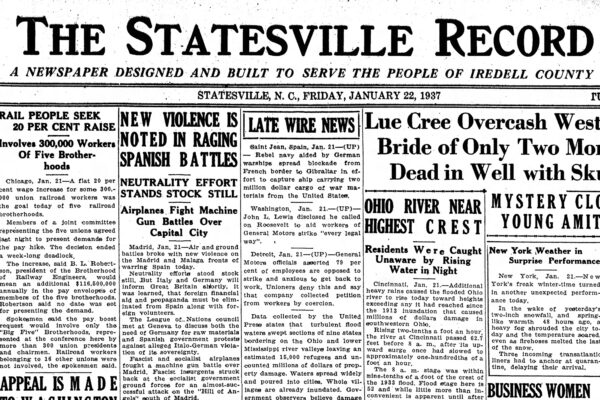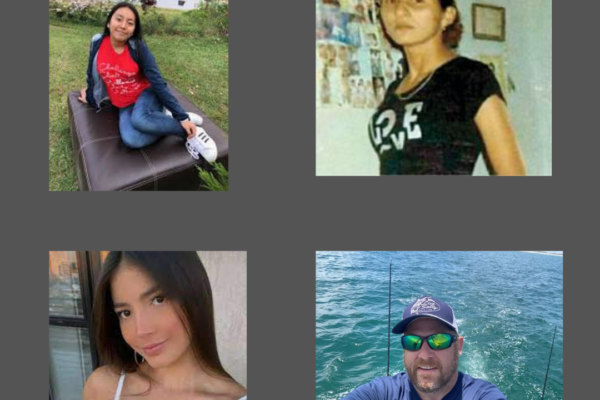Last week a graduate student entered an academic lab on the University of North Carolina campus, shooting and killing a respected professor, resulting in an hours-long lockdown of the campus. The student was arrested a short time later and the motive for the murder has not yet been revealed. In 1995, a law student at the same university headed towards campus with an assault rifle, shooting at random passersby and murdering two innocent people. His actions sparked a nationwide debate on what type of punishment a person with mental illness should receive for such crimes. Also, we have an update on the missing persons case of Allisha Watts, who went missing in North Carolina this past summer.
On August 28, I was scrolling through my Facebook feed when I saw the first news alert that the campus of the University of North Carolina at Chapel Hill had gone on lockdown around 1 p.m. I froze. I have friends with children who are students at that university, and my own kids have friends there as well. Plus, as the parent of a student on a large university campus I know the fear of worrying about her safety at all times. The students were only in their second week of school. I felt like I was holding my breath as I checked for updates. I read there was an armed person on the campus, and that shots had been fired. I saw messages from parents whose children were holed up in classrooms, terrified of what was going on outside. I saw a report that 10 people had been injured, and there was at least one fatality and my heart sank. Hours passed.
Within a few hours, the lockdown had been lifted and a person was in custody. Reports clarified there was only one person dead, not ten. Three hours after shooting Zijie Yan at the Caudill Labs on campus, thirty-four-year-old Tailei Qi was arrested at a residential neighborhood near campus and charged with first-degree murder and having a gun on educational property. Yan was the father of two young daughters and an associate professor in the Department of Applied Physical Sciences who began working for the university in 2019. The AP News reported that he was a respected and approachable professor and research adviser in the department. He ran a lab in the Department of Applied Physical Sciences with two undergraduate students, one research assistant, and three PHD students, including Tailei Qi.
While there was only one fatality, it was one fatality too many. The students there are still processing, and possibly scarred for the rest of their lives over what they experienced.
Wendell Williamson and the 1995 UNC Shooting
When I first heard the news, my mind flashed back to the day in January of 1995 when I first learned of a shooter near the UNC campus. In 1995 I was a college student who had friends there. I worked at the campus newspaper office at UNC-Asheville, and remember, this was a time where most of our breaking news came in the form of the television stations. There were no smartphones or social media apps to search for news updates. All I knew at the time was that a gunman near campus had begun shooting, and innocent bystanders had been killed.
Here’s some background on what happened on January 26, 1995. Around 2 p.m. that day, twenty-six-year-old UNC law student Wendell Williamson walked down Henderson Street near campus, carrying a semi-automatic rifle and wearing a camoflauge jacket. He opened fire, killing 42-year-old restaurant worker Ralph Walker near his apartment. He continued walking, shooting at bystanders. Twenty-year-old UNC student and lacrosse player Kevin Reichardt was riding his bicycle in front of the Phi Mu sorority house, and he was killed instantly when Williamson shot him. Williamson then shot at police officer Demetrise Stephenson, who was driving by in her police cruiser. Injured, she crashed her patrol car into a curb. Police officers on Henderson Street began returning fire at Williamson. Around this time, the manager of a local bar, former Marine and UNC graduate Bill Leone, rushed Williamson from behind and tackled him to the ground. Leone later realized he had been shot in the shoulder, and Williamson had been shot in both legs by police during the alternation. All in all, Williamson had fired at least 10-15 rounds from his weapon.
At the hospital, Williamson told an agent with the State Bureau of Investigation that he had planned the shooting spree and expected it to end in his own death. He believed unknown and malevolent forces were using telepathy to torture him. He felt he had to kill someone as a way of defending himself.
He pleaded not guilty by reason of insanity.
In an article that ran in the Asheville Citizen-Times on January 28, 1995, a UNC classmate of Williamson’s said acquaintances could tell Williamson was struggling with mental health issues. He would appear to be talking and laughing to himself in bars, stared at women and made them feel uncomfortable, and told one class he had telepathic powers. But this is not the person Williamson’s administrators, teachers, and classmates remember from his younger years. Wendell Williamson grew up in Clyde, located in the mountains of Western North Carolina. In high school, he attended The Asheville School, where he was a National Merit Scholarship semifinalist who was in the top 20 percent of his class. He served as the president of The Student Council, worked on the school newspaper, and also played varsity football and swam competitively. He lived on campus with the other boarding students at the school and had no disciplinary infractions while he was there, the former headmaster told the newspaper. He went on to attend the University of North Carolina and graduated with honors as an English major, where he was on the Dean’s List. A history buff, he was fascinated with World War II, according to his parents. He traveled for a few years after receiving his bachelor’s degree before returning to UNC and attending the law school for three years up until the shooting. A friend told the Asheville Citizen-Times that Williamson had begun having psychological problems in his early 20s and was taking medication that didn’t seem to be helping.
At the trial, Williamson’s ex-girlfriend that he dated between 1992 and 1993 testified that he had told her about voices in his head. She said he focused on two images to drive those voices out, a dragon and a rifle. During a visit to the Dollywood amusement park in Tennessee, he grew angry with her when she wouldn’t stare at a live eagle display with him. He told her he felt the display had some sort of mental activity.
In November of 1995, a jury found Wendell Williamson, who was diagnosed with schizophrenia, not guilty by reason of insanity. One of the jurors told The News and Observer the following:
It’s a very tough decision for the jurors because we do not like having to say the words ‘not guilty,’ because of course, he committed the crime. But it’s the way the law is written and the only thing that we could do.” After the verdict, Williamson was involuntarily committed to Dorothea Dix Hospital in Raleigh, where he was to remain until he could demonstrate that he no longer had mental illness, or was no longer a danger to others.
For the families of Williamson’s victims, things only got worse. A few years after his trial, Williamson sued Dr. Myron Liptzin, for malpractice, claiming the psychiatrist should have foreseen that Williamson was likely to become dangerous, misdiagnosed his condition, and should have taken more forceful steps to ensure Williamson was aware of the perils of stopping his prescribed medication.
In the spring of 1994, Dr. Liptzin, who had been treating Williamson through the UNC Health System, told the law student he was retiring. He advised him to make an appointment with his replacement and prescribed a 30-day supply of antipsychotic medication used to treat paranoid schizophrenia. Williamson did not take Dr. Liptzin’s advice. Instead, as Williamson said in a segment that ran on “60 Minutes,” he took up target practice. Almost nine months later, he went on his shooting rampage near the campus. He told “60 Minutes,” “I practiced pretty much walking up to trees and shooting them dead, because I thought that’s what I’d be doing to people.” Dr. Liptzin told the news producers that doctors cannot monitor their patients at home. He said, “Even if I give somebody a prescription, am I bound to go to their apartments or their homes and ask them to present the bottles and show me that they’ve been taking the medication?”
A jury decided in Williamson’s favor, awarding him $500,000.
Community Response to Williamson’s Lawsuit
In November of 1998, David R. Work, who was then serving as the executive director of the North Carolina Board of Pharmacy and an adjunct professor of pharmacy law at UNC’s School of Pharmacy, wrote a guest column for The Chapel Hill Herald. He wrote:
“All agree that Wendell Williamson was the perpetrator, killing two unsuspecting and innocent citizens, yet he was found not responsible for these acts. All also agree that Liptzin was the only person among the litigants in the courtroom to help, perhaps imperfectly, Williamson with his mental illness. The not-guilty Williamson was sent to indefinite confinement while the helping Liptzin had a $500,000 judgment as an epitaph to his medical practice. It’s obvious that something is not right here. There is an edgy feeling in the health care community about legal proceedings as well as lawyers, and cases like the Williamson one matter further aggravate that emotion.”
Work pointed out that prior to the 1960s, people diagnosed with schizophrenia were likely to have been institutionalized indefinitely in places like Dorothea Dix Hospital whether they committed crimes or not. A movement in the 1960s declared these types of incarcerations violated citizen’s rights, and the population of mental health institutions decreased by almost 50 percent. By the 1990s, fewer than 10 percent of the state’s mental patients were in state hospitals while more than 90 percent were in the community, including Wendell Williamson.
Work also said, “As a direct result of my job activities I have received the irrational, intense, and corrosive attention of a person diagnosed with paranoid schizophrenia. He created havoc in my office, threatened me and my family, physically attacked others, producing fractures, sutures and time in Central Prison. It is clear to me that psychiatric physicians, nurses, and social workers who toil in mental health deserve our admiration, not our litigation.”
The University Appeals
The University of North Carolina, which would have been responsible for paying the $500,000 damage award since Liptzin had been a university employee, filed an appeal of the verdict. The appeal was supported by a brief written by the North Carolina Psychiatric Association, in which it emphasized the danger to seriously ill patients and threats to psychiatric care in general that would likely result if the judgment was allowed to stand, and psychiatrists became more selective in the patients they agreed to treat. In December of 2000, the Court of Appeals of North Carolina unanimously agreed with the arguments made the university and the NCPA and ordered the trial court judge to enter a verdict in favor of Liptzin. The court ruled that the alleged negligence “was not the proximate cause of the plaintiff’s (Williamson’s) injuries. No action the psychiatrist took or did not take as part of his treatment of Williamson contributed directly to the murderous rampage that landed Williamson in court and then a psychiatric hospital.
After his initial evaluation at Dorothea Dix Hospital in Raleigh, Wendell Williamson was then transferred to Broughton Hospital in Morganton, North Carolina. In 1998, he was transferred back to Dorothea Dix after it was discovered he had a drinking problem. In 2001, he published a book through the Mental Health Communication Network titled “Nightmare: A Schizophrenia Narrative,” angering the families of Ralph Walker and Kevin Reichardt.
According to news station WRAL, a doctor testified in 2002 that Williamson was a model patient. He received up to an hour of supervised time every day. In August of 2006, he disappeared from the hospital for 12 hours, before calling hospital officials the next day from a boating area at Lake Wheeler, located about six miles from the hospital. He was picked up and returned to the facility without incident. From what I can tell now, Wendell Williamson is now able to spend up to 12 hours off campus of the hospital unsupervised with family members with no notification to victims’ families or the community.
An Update on Allisha Watts
Now I’d like to bring an update to a recent missing persons case from the Charlotte area that unfortunately had a heartbreaking ending.
Thirty-nine-year-old Allisha Watts went missing this past summer in mid July. She lived in Moore County but frequently visited the Charlotte area, as she was dating someone from here, a man named James Dunmore. Allisha was last seen driving away from her boyfriend’s home on Pamela Lorraine Drive in Charlotte on July 16. They were supposed to attend a comedy show together that weekend. News sources have reported her family said they did not end up going to the show at Bojangles Coliseum. Both Allisha’s and James’ cell phones pinged near his home in Charlotte on the morning of July 18.
A few hours later, authorities found her black 2023 Mercedes Benz GLC 300 in a DMV parking lot in Anson County. Inside, they found James Dunmore, unresponsive but alive after what appeared to be a suicide attempt. He was then hospitalized and refused to speak to officers about Allisha’s whereabouts. Police found spent shell casing from a 9 mm gun outside his home in Charlotte. Police searched Allisha’s home in Foxfire on July 19 because her father was worried about her dog being there alone when he reported his daughter missing. Allisha was not located in the home.
WRAL News out of Raleigh reported that James Dunmore had a domestic violence order served against him in Durham County just two months before Allisha went missing. A woman who had been dating James alleged a litany of abuses had occurred prior to March of 2023. The victim reported having been stalked, attacked, punched, choked, and in one instance, he took her against her will from Charlotte to South Carolina. James also had prior convictions from the state of Virginia for assault, battery and kidnapping from 2003. He spent five years in prison on that charge and was sentenced to 15 years of probation.
James Dunmore remained a person of interest until August 25, when the body of a woman was discovered in the town of Norman, located along the Richmond-Montgomery County line on Interstate 74 in North Carolina. James was arrested at his home later that day and charged with murder. While the body discovered behind a local cemetery has yet to be officially identified, authorities believe it to be Allisha Watts. The cemetery was about 20 minutes away from Allisha’s home in Foxfire. Her family believes digital evidence and cell phone pings likely led investigators to that area.
Case Resources:
https://www.newsobserver.com/news/local/article278727509.html
https://www.spokesman.com/stories/1995/jan/27/law-student-opens-fire-in-nc-kills-2-wounds-2/
Asheville Citizen-Times
February 11, 1995
“Hearing Delayed for Haywood County man charged in Chapel Hill shooting”
https://www.newspapers.com/image/200440844
Asheville Citizen-Times
January 28, 1995
https://www.newspapers.com/image/200527122
News & Record
November 2, 1995
“Trial hinges on gunman’s sanity”
https://www.newspapers.com/image/944913613
The Chapel Hill Herald
October 26, 1995
“Williamson statement ruled inadmissible”
https://www.newspapers.com/image/792263678
Asheville Citizen-Times
February 11, 1995
“Hearing Delayed for Haywood County man charged in Chapel Hill shooting”
https://www.newspapers.com/image/200440844
Raleigh News and Observer
November 8, 1995
https://www.newspapers.com/image/656878408
November 29, 1998
The Chapel Hill Herald
“Those who work with mentally ill deserve praise”
https://www.newspapers.com/image/794090930
The News and Observer
Sept. 27, 1998
“Verdicts on a controversial decision in a Chapel Hill Case”
https://www.newspapers.com/image/657244943
News and Record
January 23, 2000
“What Next for Wendell Williamson”
https://www.newspapers.com/image/657922576
https://www.wral.com/story/111584/
“Wendell Williamson Back at Dorothea Dix Hospital Following Disappearance”
August 3, 2006
https://abc7chicago.com/archive/9084213/
“Court Orders Reversal in Liptzin Negligence Case”
https://psychnews.psychiatryonline.org/doi/full/10.1176/pn.36.2.0001b








